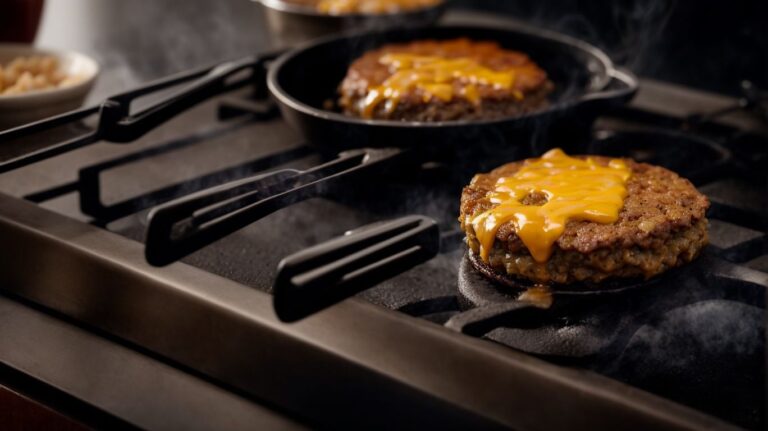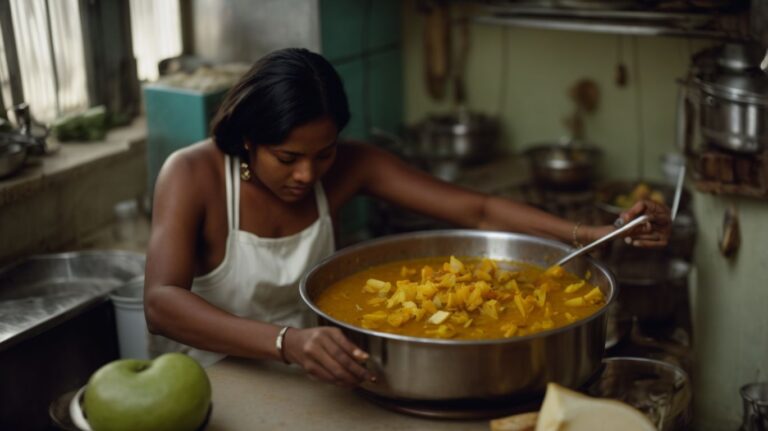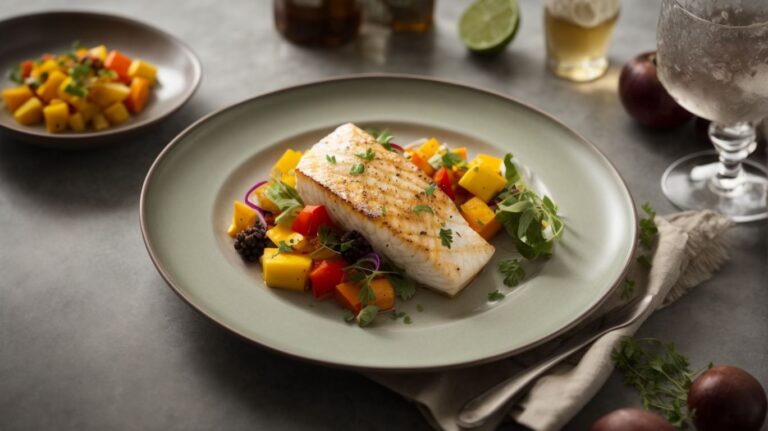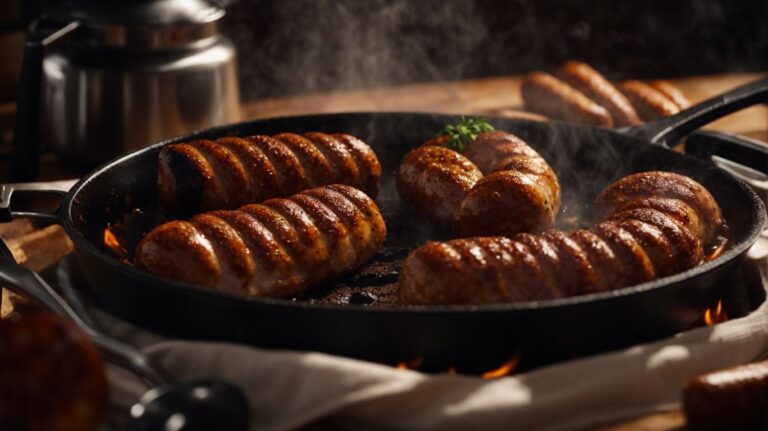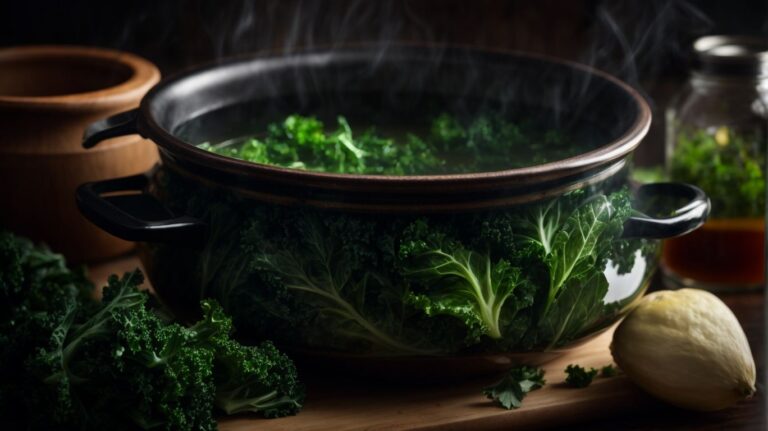How to Cook Rice Without Sticking?
Are you tired of ending up with sticky and mushy rice every time you cook it? Look no further!
We explore the best type of rice for non-sticky results and what to look for in a rice cooker for the perfect batch of fluffy rice. From preparing the rice to cooking it on the stove or in a rice cooker, we cover all the tips and tricks to achieve fluffy and non-sticky rice every time.
Let’s dive in and elevate your rice game!
Key Takeaways:
What Type of Rice is Best for Non-sticky Rice?
Selecting the right type of rice is crucial for achieving non-sticky results in your dishes.
Long-grain white rice, known for its slender shape and fluffy texture when cooked, contains a moderate amount of starch, making it a versatile option for various recipes.
Jasmine rice, with its fragrant aroma and slightly sticky texture, is perfect for Asian dishes such as stir-fries and curries, thanks to its higher amylopectin content.
On the other hand, basmati rice, prized for its delicate aroma and elongated grains, has a lower starch content, making it an excellent choice for pilafs and biryanis.
What to Look for in a Rice Cooker for Non-sticky Rice?
When choosing a rice cooker for non-sticky rice, consider features like non-stick coating recommended by culinary experts like Chef JJ Johnson and Chef JoAnna Minneci.
Non-stick coatings are vital components in rice cookers, playing a significant role in the overall cooking process and ensuring that your rice comes out fluffy and evenly cooked each time.
Chef JJ Johnson emphasizes that the non-stick surface creates a barrier between the rice grains and the pot, preventing them from clumping or burning, resulting in a perfect batch of rice every time.
Chef JoAnna Minneci also stresses that a quality non-stick coating not only makes cleaning a breeze but also reduces the amount of oil needed during cooking, promoting healthier meal preparation.
So, be sure to prioritize this feature when selecting your rice cooker to achieve delicious, hassle-free results consistently.
Size and Capacity
Selecting the right size and capacity for your rice cooker ensures you can prepare the desired amount of rice without compromising on quality.
When considering the capacity of a rice cooker, it’s crucial to match it to your typical cooking needs. A smaller capacity cooker may be suitable for individuals or small families, resulting in faster cooking times. For larger households or gatherings, opting for a larger capacity cooker is essential to avoid multiple batches and ensure uniform cooking. An appropriately sized rice cooker not only saves time and energy but also guarantees consistent results each time you cook, whether it’s fluffy white rice, sticky sushi rice, or any other variety.
Material and Coating
The material and coating of a rice cooker, such as peanut oil, grapeseed oil, or olive oil, play a vital role in preventing rice from sticking and enhancing flavor.
Materials and coatings used in rice cookers not only ensure that the rice cooks evenly but also impact the taste and texture of the final dish.
- For instance, applying a thin layer of grapeseed oil or peanut oil to the cooking surface can significantly reduce the chances of the rice sticking to the pot, making it easier to clean afterward.
The type of material used can also affect the heat distribution, leading to better-cooked rice and enhancing the overall flavor profile.
Features and Functions
Consider the features and functions of a rice cooker, especially for preparing Mediterranean dishes that require precise cooking techniques.
When selecting a rice cooker for your Mediterranean culinary endeavors, look for specific cooking settings tailored for different types of rice commonly used in Mediterranean cuisine such as Arborio, Basmati, or Jasmine. These settings should ensure the rice is cooked to perfection, retaining its unique texture and flavors.
Opt for a keep warm function to maintain the ideal serving temperature of the rice without overcooking it, allowing you to focus on preparing other components of your Mediterranean dish.
How to Prepare Rice for Cooking?
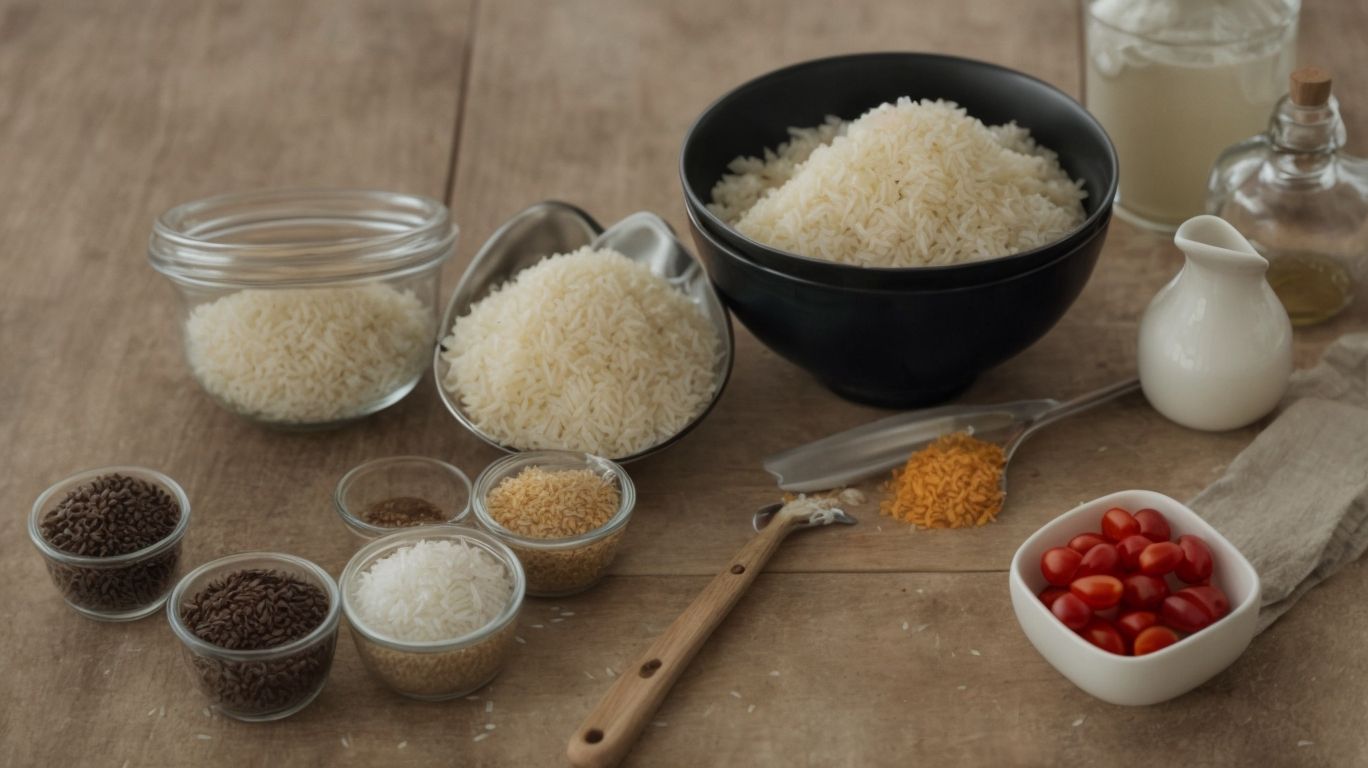
Credits: Poormet.Com – Thomas Carter
Preparing rice for cooking involves rinsing the grains to remove excess starch and ensure a non-sticky texture.
When rinsing rice, the first step is to measure out the desired amount of rice and pour it into a fine-mesh strainer. Then, place the strainer under cool running water, gently agitating the grains with your hands. This process helps wash away the surface starch that can cause the rice to clump together during cooking.
It is crucial to continue rinsing until the water runs clear, indicating that most of the excessive starch has been removed, resulting in fluffier, separate grains once cooked.
Rinse the Rice
Rinsing rice using the finger trick method helps eliminate excess starch, leading to fluffier and non-sticky cooked grains.
-
When rinsing rice with this technique, you start by placing the desired amount of rice in a bowl or a fine-mesh strainer.
-
Next, pour cold water over the rice until it’s completely submerged. By gently swirling the grains around with your fingers, you release the starch into the water.
The key is to continue this process until the water runs almost clear. This step ensures that the rice’s starch content is reduced significantly, promoting better separation of grains during cooking.
Soak the Rice
Soaking rice before cooking can help avoid a mushy texture and enhance the overall cooking process by allowing the grains to absorb water gradually.
When rice is soaked, it swells up, which reduces the cooking time and ensures that each grain cooks evenly. Soaking rice can also make it easier to digest, as it softens the outer bran layer.
One key benefit of soaking rice is that it can improve the flavor profile of the dish, making it more aromatic and enhancing its overall taste.
This simple step can be particularly beneficial for dishes like biryani or risotto, where the texture and consistency of the rice play a crucial role in the final outcome.
What is the Ratio of Water to Rice for Non-sticky Rice?
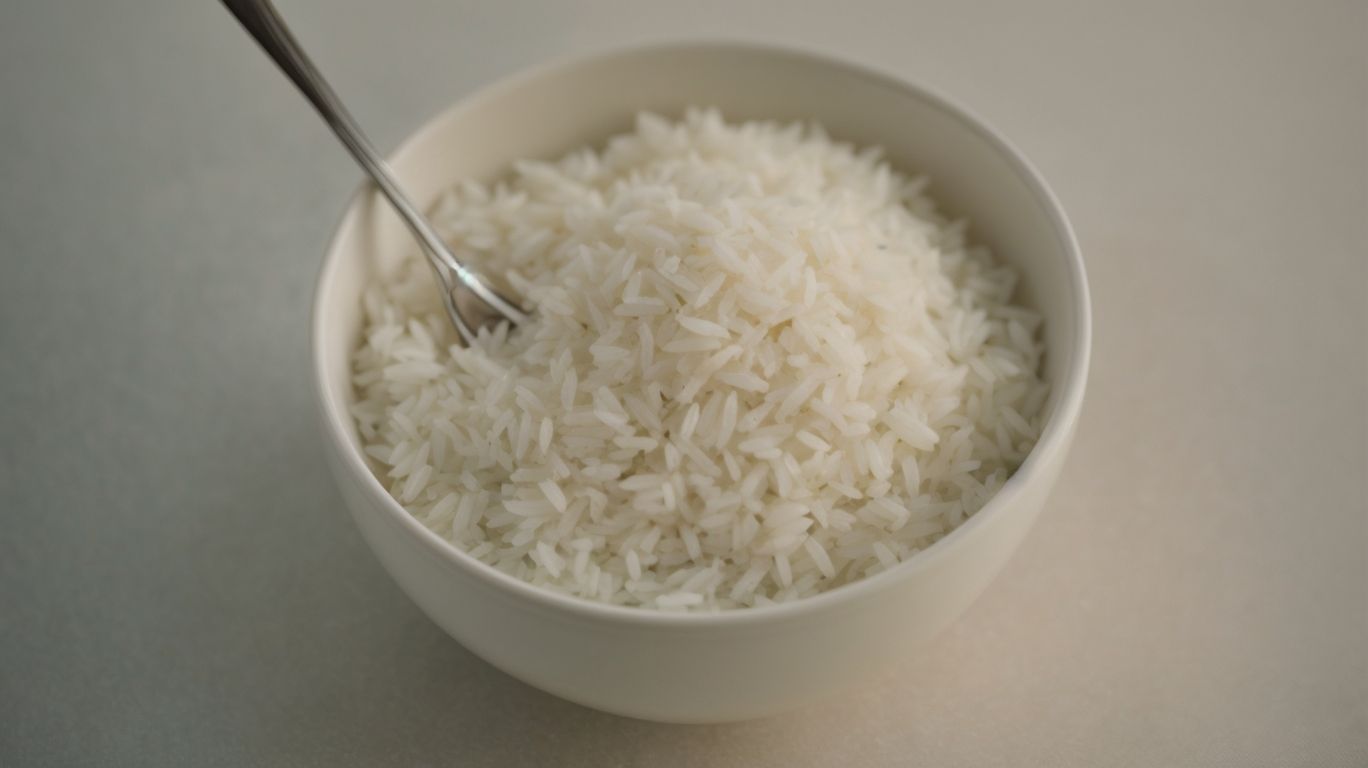
Credits: Poormet.Com – Carl Carter
Maintaining the correct ratio of water to rice is essential for achieving non-sticky results in your cooked rice.
For fluffy long-grain rice like Basmati or Jasmine, the general rule is to use a 1:1.5 ratio of rice to water. In terms of short-grain rice, such as Arborio for risotto, you might need a bit more water, aiming for a 1:2 ratio. Brown rice, being more dense, usually requires a 1:2.5 ratio to ensure it cooks properly.
Remember, the water absorption capacity can vary depending on the rice variety and cooking method, so it’s crucial to adjust the ratio accordingly. Excess water can make your rice mushy, while too little can result in undercooked grains.
How to Cook Rice in a Rice Cooker?
Cooking rice in a rice cooker is a convenient method that ensures even cooking and prevents crunchy bits or uneven texture.
If you want to achieve perfectly fluffy, non-sticky rice every time, follow these simple steps.
- First, measure the rice using standard measuring cups and rinse it thoroughly to remove excess starch.
- Next, add the rinsed rice to the rice cooker and pour in the appropriate amount of water based on the type of rice you are using. It’s important to follow the recommended rice-to-water ratio for optimal results.
- Turn on the rice cooker and let it work its magic.
- Once the rice is cooked, allow it to rest for a few minutes before fluffing it with a fork to avoid clumping.
Measure the Rice and Water
Accurately measuring the rice and water proportions is key to achieving perfectly cooked and non-sticky rice in a rice cooker.
When using a rice cooker, precision in measurement plays a vital role in determining the texture and quality of the cooked rice. Even a slight deviation in the ratio of rice to water can lead to undesirable outcomes. For instance, using too much water can result in mushy rice, while using too little water can yield dry and undercooked grains.
By following the recommended measurements, you ensure that the rice absorbs just the right amount of water during the cooking process, leading to fluffy, separate grains that are a delight to eat. Consistency in measuring will help you master the art of cooking perfect rice every time.
Add Flavors and Seasonings (Optional)
Enhance the flavor of your rice by adding optional seasonings and ingredients during the cooking process for a personalized touch.
Experiment with a variety of flavor profiles to tailor your rice to different cuisines. For a touch of freshness, try adding chopped herbs like parsley, cilantro, or mint. Spice lovers can opt for red pepper flakes, cayenne pepper, or a pinch of cumin for a kick. Enhance the aroma by tossing in some whole spices such as cinnamon sticks, cloves, or cardamom pods. For a more savory note, consider sautéing garlic, onions, or shallots before adding the rice and liquid. These seasoning choices can transform a basic rice dish into a culinary delight that perfectly complements your main course.
Turn on the Rice Cooker
Activate your rice cooker following the manufacturer’s instructions or expert advice from culinary professionals like Chef JoAnna Minneci for optimal cooking results.
To operate your rice cooker effectively, start by measuring the rice and water precisely according to the recommended ratios. Always use the provided measuring cup for accuracy. After rinsing the rice to remove excess starch, add it to the cooker and pour in the corresponding water level indicated in the cooker. Close the lid securely to trap steam during the cooking process. Select the desired setting based on the type of rice being cooked, whether it’s white, brown, sushi, or mixed rice. Let the rice cooker do its magic without opening the lid to ensure perfectly cooked, fluffy rice. Once cooking is complete, fluff the rice gently with a fork to prevent clumping and serve hot.
How to Cook Rice on the Stove?
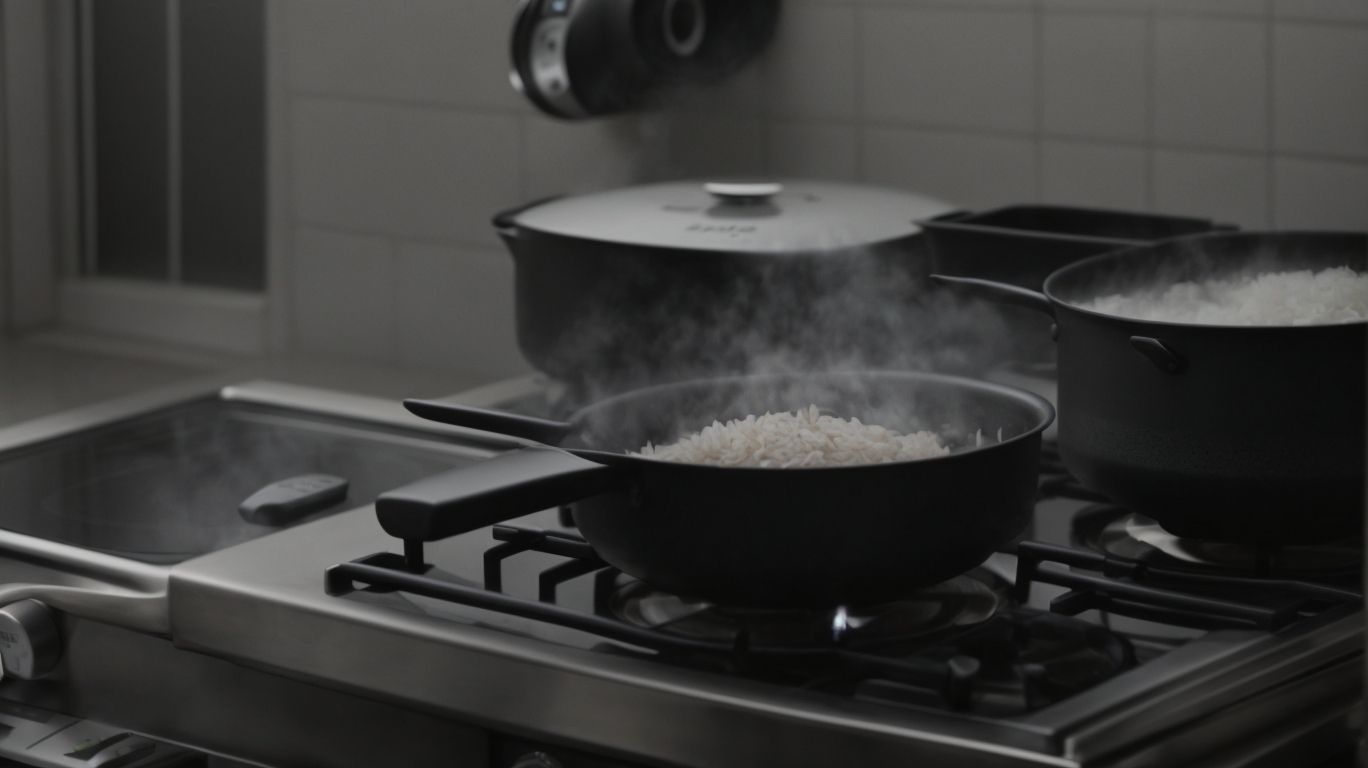
Credits: Poormet.Com – Dennis Flores
Cooking rice on the stove requires careful monitoring of boiling, simmering, and resting stages to achieve non-sticky and fluffy results.
Once the rice has been rinsed thoroughly to remove excess starch, begin by bringing a pot of water to a boil. For each cup of rice, use the appropriate amount of water to ensure proper absorption. When the water reaches a rolling boil, add the rice and give it a gentle stir. Lower the heat to a simmer and cover the pot, allowing the rice to slowly absorb the water. It is crucial not to remove the lid during the cooking process to maintain the steam needed for the rice to cook evenly. After the designated cooking time, turn off the heat and let the rice rest, covered, for a few minutes. This resting period allows the rice to finish cooking using residual heat, resulting in perfectly tender grains. Remember, patience during the process is key to mastering the stovetop method for cooking rice.
Measure the Rice and Water
Accurately measuring the rice and water quantities is essential when cooking rice on the stove to maintain the desired consistency and avoid stickiness.
First, it’s crucial to determine the amount of rice you will cook. A typical rule of thumb is 1 cup of uncooked rice per person. Using a measuring cup, accurately scoop the rice into a pot. Next, rinse the rice under cold water until the water runs clear to remove excess starch. For every cup of rice, you’ll need double the amount of water. This means if you’re cooking 2 cups of rice, you’ll need 4 cups of water.
Bring to a Boil
Bringing the rice and water mixture to a gentle boil on the stove sets the foundation for perfectly cooked grains without stickiness.
Once the water and rice start simmering, the starches in the grains begin to break down and absorb the liquid, leading to that fluffy texture everyone loves. This initial boiling step is crucial as it not only kickstarts the cooking process but also releases excess surface starch, preventing clumping and ensuring each grain cooks evenly. The transformation that happens during this stage is key to achieving that light and separate rice that complements any dish perfectly.
Simmer and Cover
Simmering the rice while covered on the stove allows for gradual absorption of water, resulting in fluffy and non-sticky cooked grains.
During this stage, maintaining a gentle simmer is crucial to prevent the rice from scorching and ensure even cooking. When the rice is covered, steam is trapped within the pot, creating a controlled environment that helps the grains soften uniformly. This combination of heat and steam aids in breaking down the starches in the rice, leading to that desired light and airy texture.
Covering the rice pot during simmering also prevents excessive evaporation, preserving the moisture essential for fluffy rice. It’s essential to resist the temptation to uncover the pot frequently, as this can disrupt the steam circulation and result in unevenly cooked rice.
Fluff and Rest
Fluffing the cooked rice with a fork and allowing it to rest off the heat can prevent stickiness and avoid a mushy texture.
When rice is cooked, the starches in the grains undergo changes, making them sticky and prone to clumping. Fluffing the rice with a fork separates the grains, allowing them to maintain their individual integrity.
Allowing the rice to rest off the heat after cooking is crucial as it helps redistribute moisture evenly throughout the grains, preventing them from becoming overly wet and mushy. This simple step can make a significant difference in the texture and overall quality of your rice dishes, ensuring each grain remains fluffy and distinct.
Tips for Fluffy and Non-sticky Rice
Implementing key tips can help you achieve fluffy and non-sticky rice consistently, enhancing your culinary creations.
In terms of cooking rice, the starch content in the grains plays a crucial role in determining the final texture. Opt for varieties like basmati, jasmine, or long-grain white rice for fluffier results. Rinse the rice thoroughly before cooking to remove excess starch, which can lead to stickiness.
- Use the right water-to-rice ratio; generally, it’s 1:2 for most types of rice but can vary slightly.
- Cook rice in a heavy-bottomed pot with a tight-fitting lid to trap steam and ensure even cooking.
- Avoid peeking or stirring during cooking to prevent steam from escaping.
Use the Right Rice-to-Water Ratio
Maintaining the correct rice-to-water ratio is crucial to prevent a mushy texture and achieve fluffy, non-sticky rice.
When cooking rice, the proper ratios vary based on the type of rice being prepared. The general rule of thumb for long-grain white rice is to use a 1:2 ratio of rice to water. Jasmine or basmati rice may require slightly less water to achieve that perfect light and airy consistency. Conversely, short-grain rice, like arborio for risotto, demands more moisture and typically calls for a 1:1.5 ratio. Experimenting with these ratios to suit your preferences and the kind of dish you’re making can lead to mastering the art of rice cooking!
Let the Rice Rest Before Fluffing
Allowing the cooked rice to rest before fluffing helps prevent sticking and ensures a light, non-sticky texture.
When rice is cooked, the grains undergo changes in their structure, with the moisture redistributing throughout each kernel. Allowing the rice to rest after cooking allows for the moisture to fully disperse evenly, which ultimately helps in achieving that perfect fluffy texture. This resting period also allows the starches in the rice to firm up slightly, reducing the tendency of the grains to clump together or stick to the pot or utensils.
During this resting time, any excess steam inside the pot will be reabsorbed by the rice, making it less prone to being overly wet or mushy. This simple yet crucial step can significantly enhance the overall quality of your rice dish, whether you are preparing a simple side dish or a flavorful rice-based main course.
Avoid Stirring the Rice While Cooking
Resist the urge to stir the rice while cooking to maintain separate grains and achieve a non-sticky outcome.
When you stir rice too frequently during the cooking process, you risk breaking the grains, causing them to release excess starch and leading to a mushy, overcooked texture. Remember, each grain of rice needs space to expand and cook evenly without becoming gluey. By allowing the rice to steam undisturbed, you enable it to absorb the liquid gradually and evenly, resulting in a light, fluffy texture that is perfect for serving as a side dish or as a base for various dishes.
Frequently Asked Questions
How to Cook Rice Without Sticking?
Cooking rice can be tricky, especially if you want to avoid the dreaded sticky texture. Here are some frequently asked questions on how to cook rice without sticking!
Why does rice stick when cooking?
Rice sticks when cooking because of its high starch content. As it cooks, the starches are released and form a sticky coating on the rice grains. This is why it’s important to use the right technique to prevent sticking.
What is the best type of rice to use?
For perfectly cooked rice that doesn’t stick, opt for long-grain rice such as basmati or jasmine. These varieties have a lower starch content, resulting in fluffier and less sticky rice.
How much water should I use when cooking rice?
The general rule for cooking rice is to use a 1:2 ratio of rice to water. However, this can vary depending on the type of rice, so always check the package instructions for the recommended ratio.
Should I rinse the rice before cooking?
Rinsing rice before cooking can help remove excess starch and prevent it from sticking. Simply place the rice in a fine mesh strainer and rinse under cold water until the water runs clear.
Can I use a rice cooker to prevent sticking?
Yes, using a rice cooker is a foolproof way to cook rice without sticking. It ensures that the rice is cooked evenly and prevents it from sticking to the bottom of the pot.
Are there any other tricks to prevent rice from sticking?
One trick is to add a teaspoon of oil or butter to the water before cooking the rice. This creates a thin barrier between the grains and prevents them from sticking together. You can also let the rice sit for a few minutes after cooking and fluff it with a fork to release any excess steam and prevent sticking.


